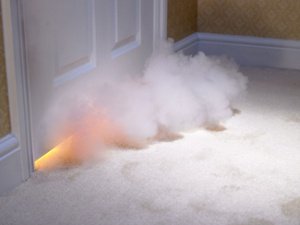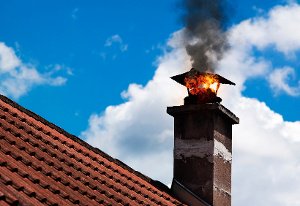
by Flagship Staff | Oct 16, 2018 | Blog
Autumn is a great time of year to enjoy your new motorcycle license. Enjoying the vivid colors and sights of the season helps riders truly appreciate how this experience is simply different from riding inside a car. Unfortunately, that difference can also put new motorcycle riders at greater risk of harm during this time of year. Animals often jump out onto the road in front of vehicles during these months, and they can be harder to spot as the days get shorter. Car drivers may be protected in these instances; motorcycle riders, however, are at much greater risk of harm.
Riding a motorcycle may be a fun experience, but it can also be a risky one. Statistically, motorcycle riders are more likely to be injured in traffic collisions than drivers of other vehicles. This is primarily due to the fact that motorcycles offer less protection than cars, trucks, and other types of vehicles on the road.
This doesn’t mean you shouldn’t ride one. Although motorcycle accident statistics can be scary, they simply show it’s extra important to exercise a certain degree of caution when operating your bike. If you’re a new motorcyclist, it’s particularly important that you understand how to keep yourself safe on the road. The following tips will help.
Don’t drink and drive
Obviously, you should never operate a vehicle while under the influence of alcohol. That said, it’s worth noting that motorcycle riders tend to be vulnerable to accidents at lower BAC levels than car drivers. Thus, it’s clear that there’s no safe amount you can drink if you plan to ride a motorcycle while the alcohol is still affecting you.
Keep a safe distance
Again, motorcyclists are more likely to be injured in traffic collisions than other drivers because they don’t have the structure of a larger vehicle protecting them. That’s why it’s important to constantly maintain a safe distance between yourself and other vehicles when operating a motorcycle.
Don’t expect other drivers to see you
Unfortunately, one of the best ways to stay safe on the road is to assume that other drivers are distracted. Distracted driving is on the rise due to the ubiquity of cell phones. Additionally, because motorcycles are relatively small vehicles, they’re harder to spot on the road. Driving defensively and assuming other drivers aren’t paying attention will help you avoid dangerous situations.
Obey posted speed limits
Don’t give in to the temptation to ride your motorcycle faster than the posted speed limit. It’s always unsafe to exceed these limits. On a motorcycle, when you’re less protected than other drivers, it’s particularly dangerous.
Wear a helmet
You’re much more likely to sustain major injuries in a traffic collision if you don’t wear your helmet. Wearing it at all times when operating a motorcycle is crucial.
Be careful around turns
Motorcycle accidents are particularly common on curves and bends in the road. Thus, it’s important to exercise additional caution when driving around turns and on curvy roads. Reduce your speed if you know a turn is coming up.
Again, while the appeal of a motorcycle is easy to understand, properly operating one is also a major responsibility. Keep these points in mind and you’ll keep yourself safe out on the road.

by Flagship Staff | Oct 9, 2018 | Blog
House fires are something most homeowners live in fear of, but today’s technology can help you ensure the safety of you, your family, and your home. Here are five high-tech ways you can reduce fire risk.
1. Install smart smoke detectors for added efficiency and convenience.
Traditional smoke detectors excel at one thing in particular: beeping at the least convenient times. They also rely on older technology to detect the presence of smoke. While this doesn’t mean these traditional devices are inefficient or faulty, a smart smoke detector can offer a number of benefits that put it head and shoulders above traditional models.
Smart smoke detectors send alerts to your smartphone when they detect smoke. If they’re part of a full home security system, they’ll also notify the authorities. These devices can link to the rest of your home and perform other actions, like flashing your smart lights. Imagine if your home security cameras activated when smoke was detected, so you could discover the cause of the fire!
Some models of smart smoke detectors have built-in carbon monoxide detectors, too. If the detector picks up a cooking experiment gone wrong, you can silence it with the press of a button. Most smart alarms also send push notifications when the battery is low, instead of the ear-shattering chirp of traditional smoke alarms.
2. Install smart batteries to make your old smoke detectors more efficient.
A smart smoke detector can be a big boost to your home’s fire safety, but you might not want to replace every single smoke detector. After all, the costs can add up. The next best option is to install smart batteries in your existing detectors. Smart batteries are inexpensive alternatives to more complex smart home systems.
Rather than beeping when the battery is low, a smart battery will send a notification to your smartphone. If one alarm goes off, it can be set to trigger the other alarms with smart batteries. You can connect your alarms together like this to better secure your home against fires.
3. Turn appliances off remotely with smart plugs.
How many times have you felt your stomach drop when you can’t remember if you turned off the iron? According to the United States Fire Administration, 9.6 percent of all home fires in 2016 were caused by an electrical malfunction. Appliances that generate a lot of heat or use higher amounts of power bring a greater risk for fires.
Smart plugs allow you to flip off the power to your appliances from your phone, whether you’re at home or at the office. If you plug your more hazardous appliances (e.g. irons, hair straighteners, etc.) into the smart plug, you don’t have to worry whether you turned them off. You can check your phone to find out whether the plug is providing power, and if so, you can flip it off.
4. Prevent cooking fires with smart stovetops.
Too many house fires occur because homeowners walk away while something is on the stove. It’s understandable; after all, a watched pot never boils, and if you have to let something simmer or boil for several hours, watching it could take a while. But if the stovetop flares and no one is around to stop it, fire can easily spread throughout the home.
Smart stovetops have built-in heat and motion sensors. If no one is detected in the kitchen for a pre-set amount of time (usually around 15 minutes), then the device automatically shuts off the stovetop to reduce the risk of fires. It can also detect sudden increases in heat and shut off the stovetop if it senses a fire.
If you’re worried about it interrupting the meal, there’s no need to. Just check on the dish every few minutes; as soon as the motion sensor detects motion, it resets the countdown.
5. Link your entire system together for maximum efficiency.
A smart home system should not be a walled garden. Smart fire detectors, alarm systems, batteries, plugs, and other devices should all be connected to one another through a smart home hub, like one provided by your local Internet company. When one sounds an alert, the others should too. Imagine if your smoke detector identified carbon monoxide in the air and sent a signal that caused your smart lights to flash. Even if you didn’t hear the siren, the lights would warn you. You would also receive a notification on your smartphone.
Ensuring your entire smart home system works together, whether through the same connection protocol (like Z-Wave or Zigbee) or through the use of a smart home hub will give you the most efficient system possible.
By spacing smart home devices around your home, you can give yourself the most warning possible if there is a fire, and you can reduce the chances that a fire will happen in the first place. When it comes down to it, you want to know if a fire starts so you can protect what’s most important: yourself and your family.

by Flagship Staff | Oct 2, 2018 | Blog
As the days get shorter, and the leaves start changing, you may be tempted to light a fire in your wood burning fireplace. While it’s enjoyable to sit and relax by a nice, warm fire, if you haven’t had your chimney inspected or cleaned this year, I would recommend holding off.
September 30 – October 6 is National Chimney Safety week. On average, 20,000 chimney fires occur in the U.S. each year. With proper inspections and cleaning, these fires can be prevented.
Neglected chimneys can destroy your home or injure your family. While some chimney fires burn wildly out of control, others can burn discretely without you ever knowing.
Here are some signs of a chimney fire:
Loud crackling and popping noise;
Dense smoke;
A strong hot smell; and
Loud rumbling sound.
Slow burning chimney fires may not be visible, but still can cause damage to your chimney or home.
Here are visible defects indicating you’ve had a small chimney fire:
Warped metal;
Cracked or collapsed flue tiles;
Damaged roofing material;
Cracks in exterior masonry;
Pieces of creosote on your roof; and
Smoke seeping through mortar joints.
An inspection by a certified and reputable company will be able to explain what’s going on with your chimney.
Understanding what causes chimney fires is the best medicine for keeping your family safe:
1. Creosote buildup. Creosote is a residue that travels up your chimney and builds up on your flue over time. In fact, some creosote builds up every time a wood burning fireplace is lit. If that residue isn’t properly cleaned out, the chance of a fire igniting in your chimney increases.
2. Clay flue liner defects. Over time, liners can crack allowing hot gases to escape. If the hot gases enter into the home, it can cause nearby framing to ignite.
3. Improper maintenance. Cracked cement in and around the fireplace can cause hot gases to escape as well.
4. Improper installation. Proper installation is critical to keeping your family safe. The National Fire Protection Association, fireplace manufacturers, and the venting manufactures have recommended guidelines for safe and proper installation.
5. Other causes. Fires can start for a number of additional reasons such as:
Too much wood in the fireplace;
Faulty igniter or connections;
No grate;
Damaged damper;
Bird nest or debris buildup; and
Low hanging tree branches.
If you enjoy a gas fireplace, here are a few things to check annually:
Inspect the glass for cracks;
Inspect the latches to make sure they still securely hold the glass;
Make sure the logs haven’t shifted;
Make sure the gas shut-off valve stops the flow of gas and test the igniter; and
Inspect the burner for clogged holes. If a burner hole is clogged, turn off the gas and clear the obstruction(s) with a pin or small needle.

by Flagship Staff | Sep 26, 2018 | Blog
If you’ve watched the news lately, there has been significant coverage on wildfires, severe storms, and most recently, Hurricane Florence. As we transition through the seasons, we encounter different perils that could pose risk to our vehicles.
With all these different scenarios present in our lives, it may be difficult to keep track of how insurance will respond to your auto claims. Therefore, this week’s blog is going to discuss the differences between comprehensive and collision insurance.
Comprehensive insurance coverage provides protection for damages caused to your car, which are not collision related. The small fly in the ointment is collision with animals. That’s covered under comprehensive insurance. In some states, comprehensive coverage is called, “other than collision.” Comprehensive insurance coverage is an optional coverage unless you have a car loan. Your lender will require you to purchase it.
Comprehensive coverage protects against:
Theft;
Vandalism;
Flood;
Fire;
Natural disasters including earthquakes, floods, hurricanes, tornadoes, and volcanic eruption;
Animals;
Riot; and
Glass breakage.
Collision insurance coverage provides protection for damages caused by upset of your covered auto or impact with another vehicle or object. Collision insurance coverage is an optional coverage unless you have a car loan.
Some examples that collision coverage would protect against Include:
You run a stop light and hit another car.
You collide with a tree, mailbox, telephone pole, or mailbox.
You swerve to avoid a deer and hit a tree.
Depending on the damage sustained by your car, it may be repaired or replaced.
Here are some different claim scenarios and how either of these coverages will respond.
Claim Scenario #1 – Flood
A summer storm comes through your city dumping a record amount of rainfall. Local rivers overflow and storm sewers can’t handle the water flow. During the storm, you look out your window and see your car floating by. Do you have coverage?
Answer: If you have comprehensive insurance coverage on your car and it’s damaged during a flood, you have coverage. If your car is totaled and needs to be replaced, the reimbursement may be your car’s actual cash value less your deductible. Talk to your agent to learn more.
Claim Scenario #2 – Fire
You’ve enjoyed a nice, hot summer with your family and friends. Countless hours have been spent sun tanning, swimming, and water-skiing. Unfortunately, your area is in a drought situation. One day an afternoon storm pops up and a lighting strike causes a wildfire that destroys many homes in your city. While your home was spared from destruction, your car, which was parked in the driveway, caught fire and burned resulting in a total loss. Do you have coverage?
Answer: If you’ve purchased comprehensive insurance coverage for your car, you would have coverage if the car is damaged or destroyed by fire. If the car is totaled and needs to be replaced, the reimbursement may be the car’s actual cash value less your deductible. Talk to your agent to learn more.
Claim scenario #3 – Deer hit
It’s a beautiful Sunday afternoon and you’re out cruising in your convertible enjoying the fall colors. Your favorite football team has a bye, so you’re not missing the big game. You know it won’t be long before you’ll have to put your convertible in storage for the winter. You decide to stop at your favorite burger bar for a sandwich and a diet soda. On your way home, a deer jumps out in front of you and you hit it. While the deer survived the crash, your convertible didn’t. Do you have coverage?
Answer: If you have comprehensive insurance coverage, it’ll pay for the damages to your car. If your car is totaled and needs to be replaced, the reimbursement may be your car’s actual cash value less your deductible. Talk to your agent to learn more.
If you swerved to avoid the deer and you hit a tree instead, comprehensive insurance coverage wouldn’t apply to the damages. You would need to have purchased collision insurance for coverage to apply.
Claim scenario #4 – Neighbor’s mailbox
A few months ago, your son or daughter received his or her driver’s license. Now that he has his or she has her license you’re life has calmed down a bit. You no longer need to take them to practice, appointments, or their job. On the other side, there’s always a bit of angst while he or she’s driving. One winter evening, the pizza parlor where he or she works closed early due to poor weather conditions. This is his or her first winter driving experience. He or she were just getting ready to make the turn into your driveway when he or she slides into your neighbor’s mailbox. Do you have coverage?
Answer: Collision insurance coverage will pay for damages to your car and the mailbox too.
Claim scenario #5 – Fallen tree
Mother Nature has whipped up a snowstorm that’s expected to dump three feet of snow in your area. Local schools have been closed and all extra-curricular activities have been cancelled. The only thing to do for the next 24 hours is to sit by the fire with a book and a warm cup of hot chocolate or coffee. After the storm passes, you go outside to begin the process of digging out. While outside you notice that your child’s car has been crushed by a large tree branch. Do you have coverage?
Answer: Comprehensive insurance coverage would pay for damage to your child’s car because of falling ice or tree limbs.
Remember, there are many different claim scenarios that can affect your family. In addition, insurance policies are not created equal! Make sure you understand what’s covered by your policy and what’s excluded. Insurance policies don’t cover everything. Talk to your insurance agent to learn more about your policy and the coverage it provides.

by Flagship Staff | Sep 18, 2018 | Blog
Swat, splat, bang. These are common sounds at my house. The reason for these sounds is mosquitos are invading us. I don’t recall them ever being this bad! Strong storms accompanied by heavy rain, and warm temperatures in Wisconsin at the end of August have caused the mosquito population to explode!
In recent weeks, if you’ve tried taking your dog for a walk, cutting the grass, or simply grilling out, you know how bad they are!
Recently, the City of Milwaukee Health Department confirmed the first likely case of West Nile virus this year. Symptoms of the virus can begin three to fifteen days after being bitten by an infected mosquito.
West Nile virus common symptoms
Fever
Rash
Headache
Joint pain
West Nile virus severe symptoms
Muscle weakness
Stiff neck
Disorientation
Tremors
Convulsions
Paralysis
Coma
Currently, there’s no cure for West Nile virus, only treatment for symptoms. If you think you’re infected with the virus, contact your healthcare provider immediately.
There are still plenty of nice days to enjoy. Here are some reminders on how to protect your family from these annoying insects throughout the fall season.
1. Limit outdoor activity. Mosquitos are most active at dusk and dawn.
2. Use insect repellent. The Centers for Disease Control and Prevention (CDC) recommends using insect repellants that contain one of the active ingredients below.
DEET
Picaridin
IR3535
Oil of lemon eucalyptus (OLE)
Para-methane-diol (PMD)
2-undecanone
To find a repellent that’s right for you and your family, click here.
Remember to apply every few hours for maximum protection.
In addition, to learn more about DEET safety, visit Consumer Reports article, “How Safe Is Deet?”
Quite honestly, the mosquitos are so bad right now; I’m going to buy a repellent with DEET for my family. I’m also going to look for a spray to treat my house door as well. Mosquitos are just sticking to it. Every time I open the door, they fly right in. I find there’s nothing worse than a mosquito buzzing around my head at night while I’m trying to sleep.
Please note; the repellents mentioned above are effective for human use only! They shouldn’t be used on pets. If you’re a pet owner, contact your veterinarian or pet store for safe product recommendations.
3. Protect your house indoors and out. Since mosquitos can transmit disease, it’s important to protect your home as well!
Use knockdown spray. If you see mosquitos flying around in your home, consider using a knockdown spray. It may be easier than chasing them around with a fly swatter. Spray also avoids splattering them on your wall. If you have pets or small children, read the warning label before spraying.
Plug in the bug zappers. Back in the day, my parents were innovative with the outdoor bug zapper. From what I’ve seen lately at friends’ homes, they’re making a comeback.
Identify areas that could be a breeding ground. Remove standing water inside and out. On a weekly basis, change the water in your birdbaths, pet’s water dish, and vases. If you have rainwater barrels, make sure they’re sealed tightly.
Inspect your screens. Make sure your screens are in good condition. Look for tears or holes in screens that protect your doors, windows, exterior vents, and chimneys.
Keep a beautifully manicured yard. Mowing your grass and trimming tall weeds on a regular basis can prevent mosquitos from finding a place to hang out.
Consider spraying your yard. If you’re unable to enjoy your deck or patio, look into treatment options. Mosquitos like to relax in dark, humid areas around your home.
4. Protect your newborn. If you’re a new parent or grandparent, congratulations! Please avoid using insect repellent on babies younger than two months old. Better alternatives include, clothing that covers their arms and legs and mosquito netting for their carriers and strollers.
5. Wear long-sleeved shirts and pants. With the nice warm temperatures we’ve had, and cooler temperatures around the corner shorts and flip-flops may be desirable apparel. However, long sleeved-shirts and pants can help protect you from unwanted bites and frustration. It makes standing at the grill a little bit warmer, but it’s worth it.





